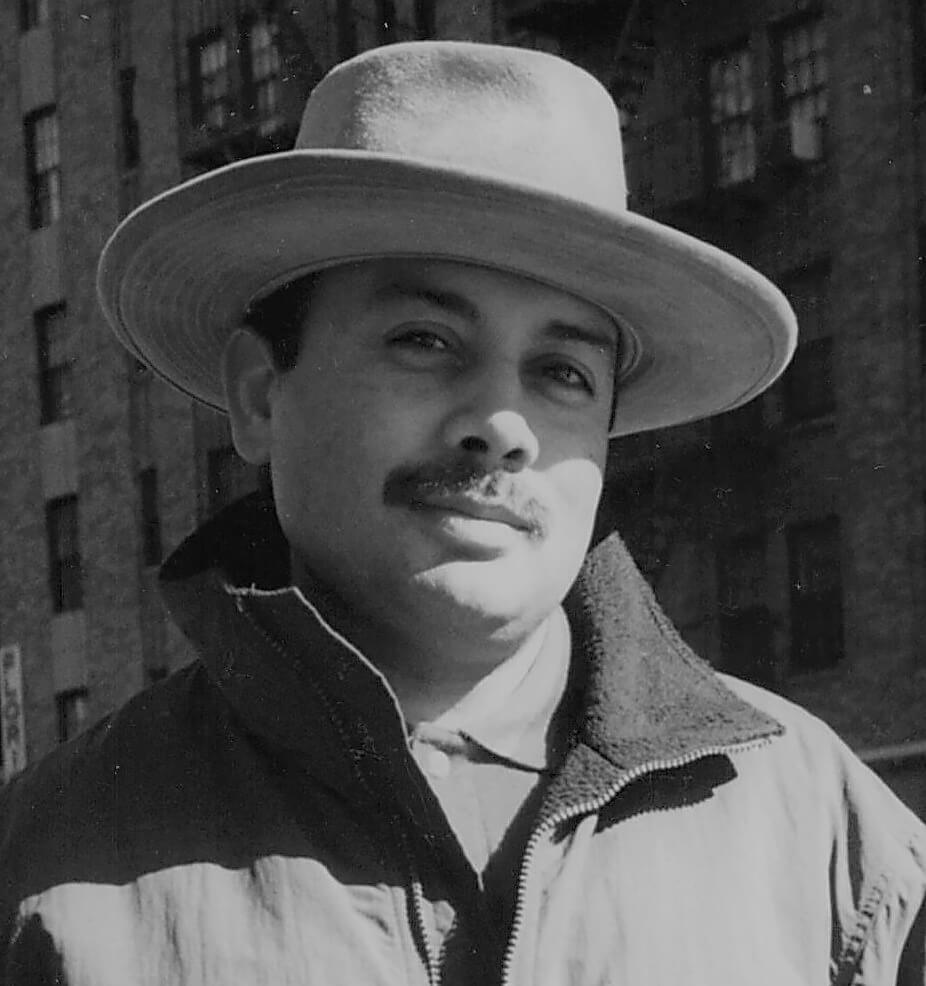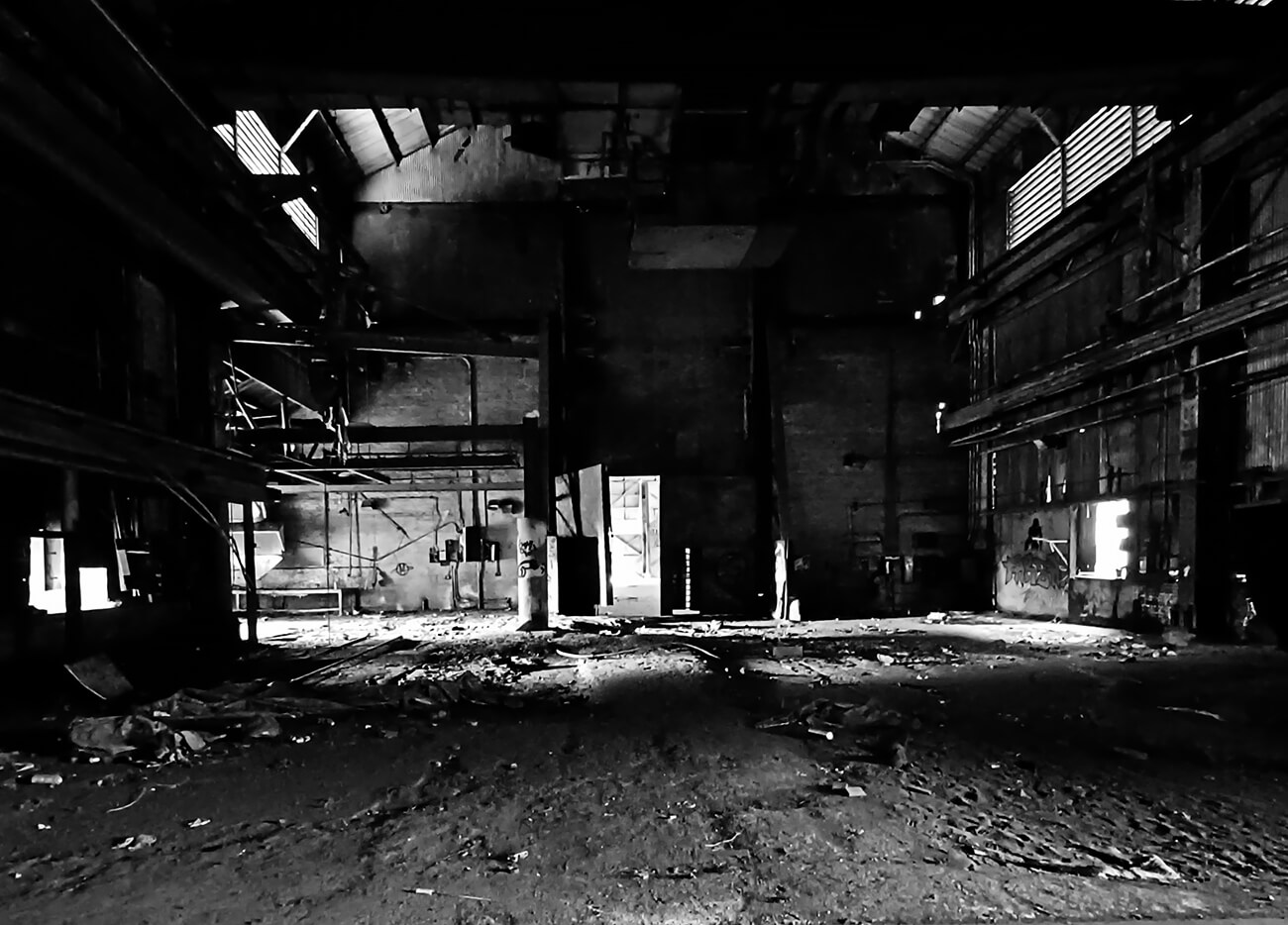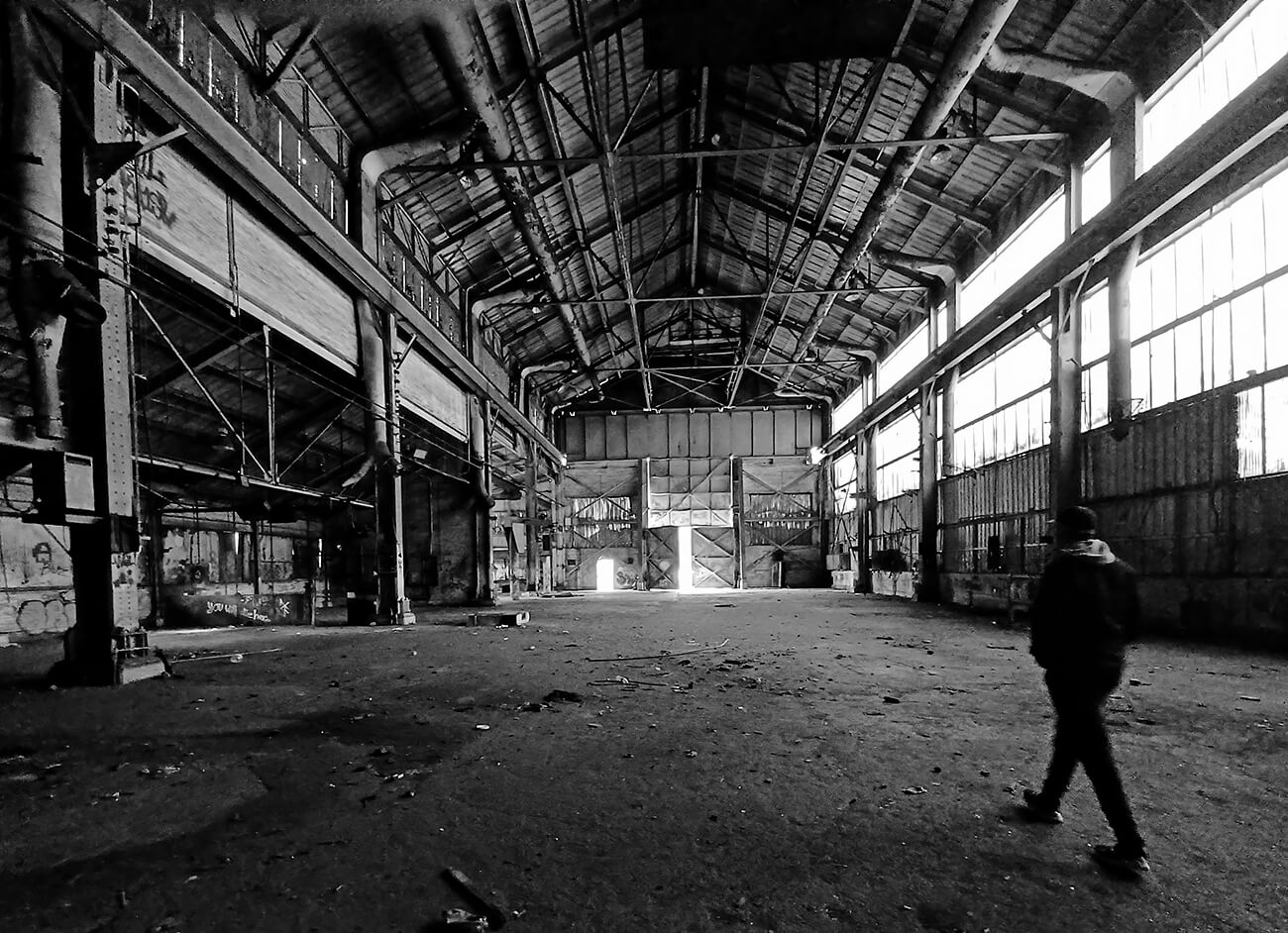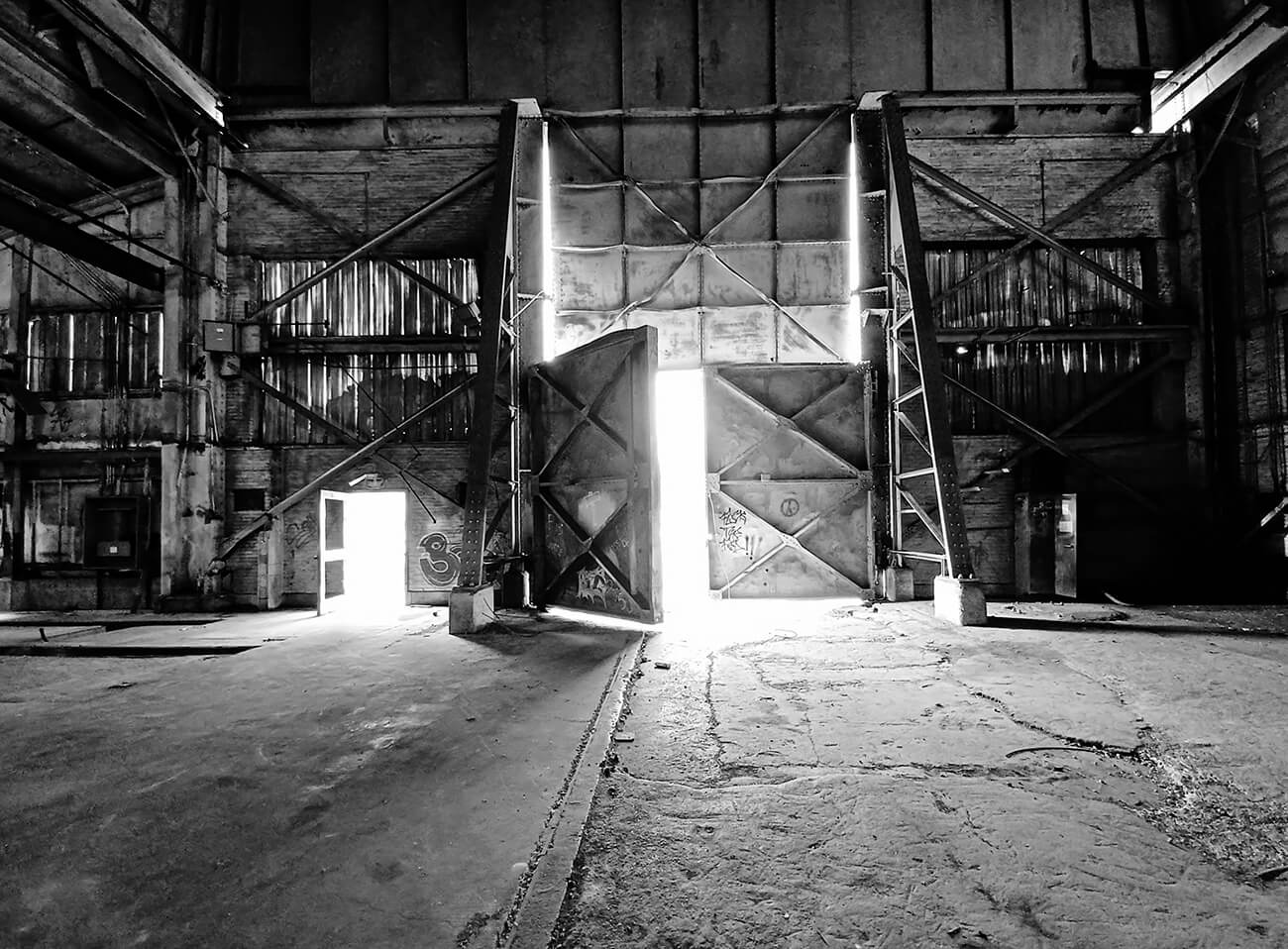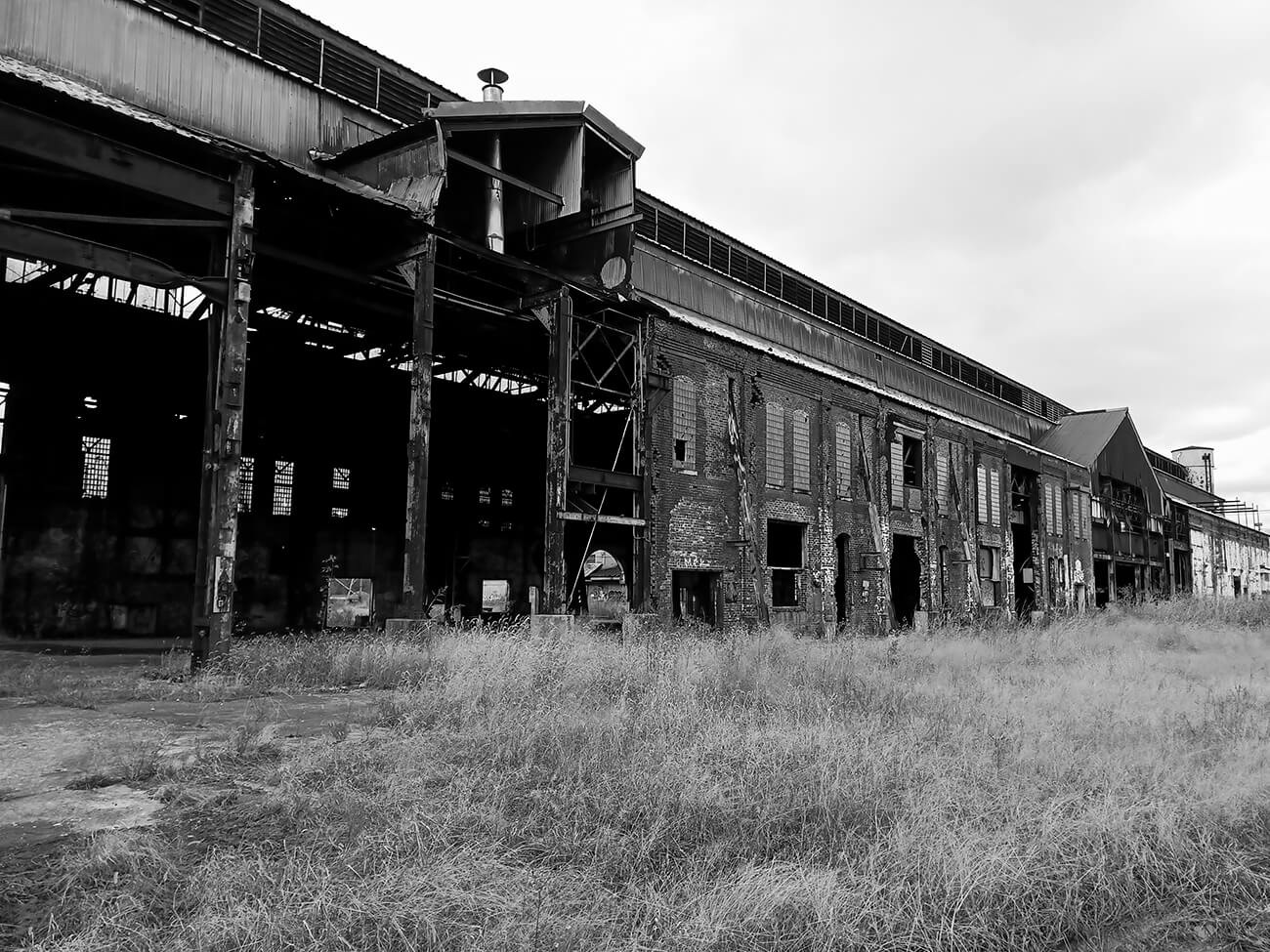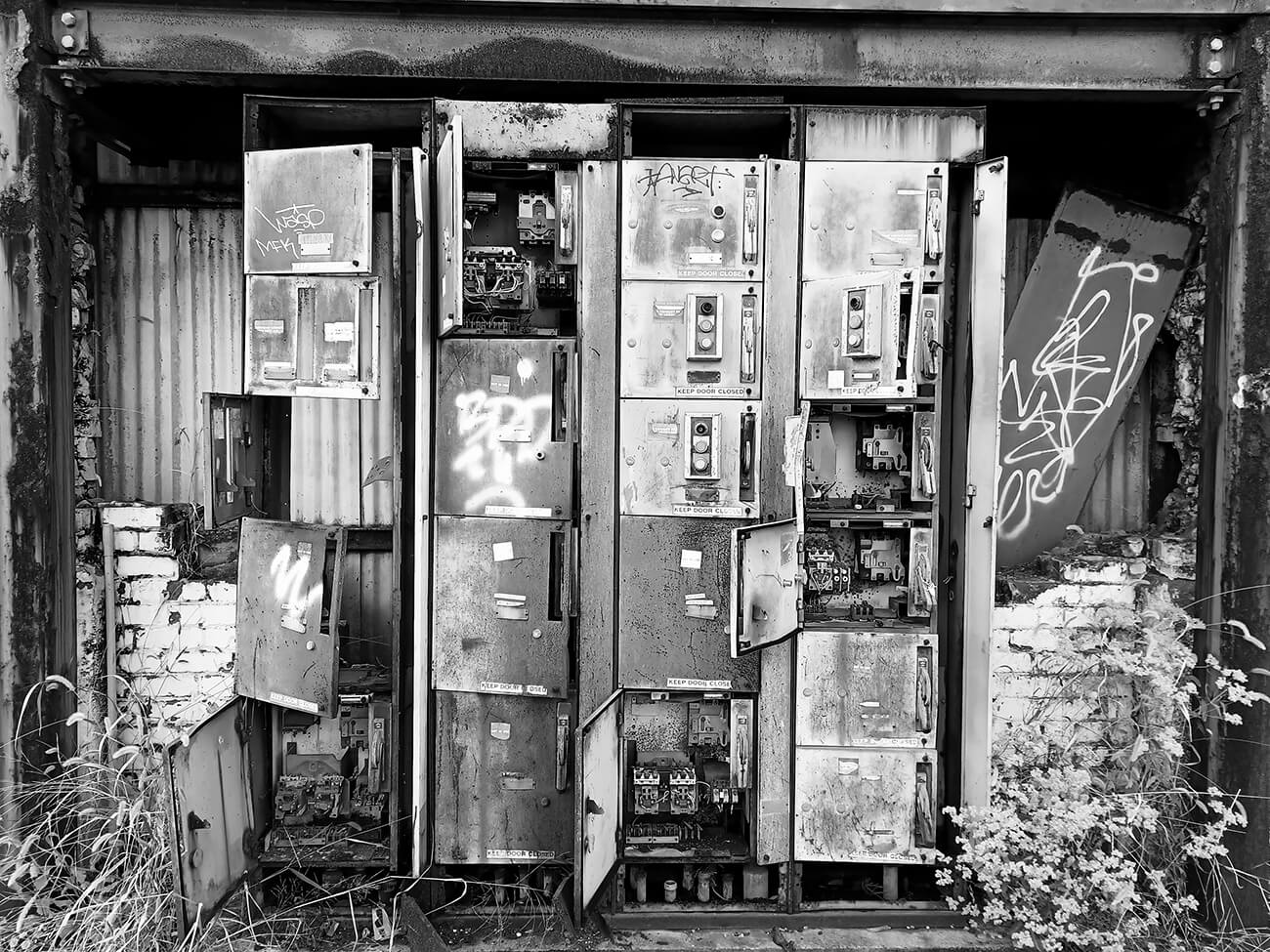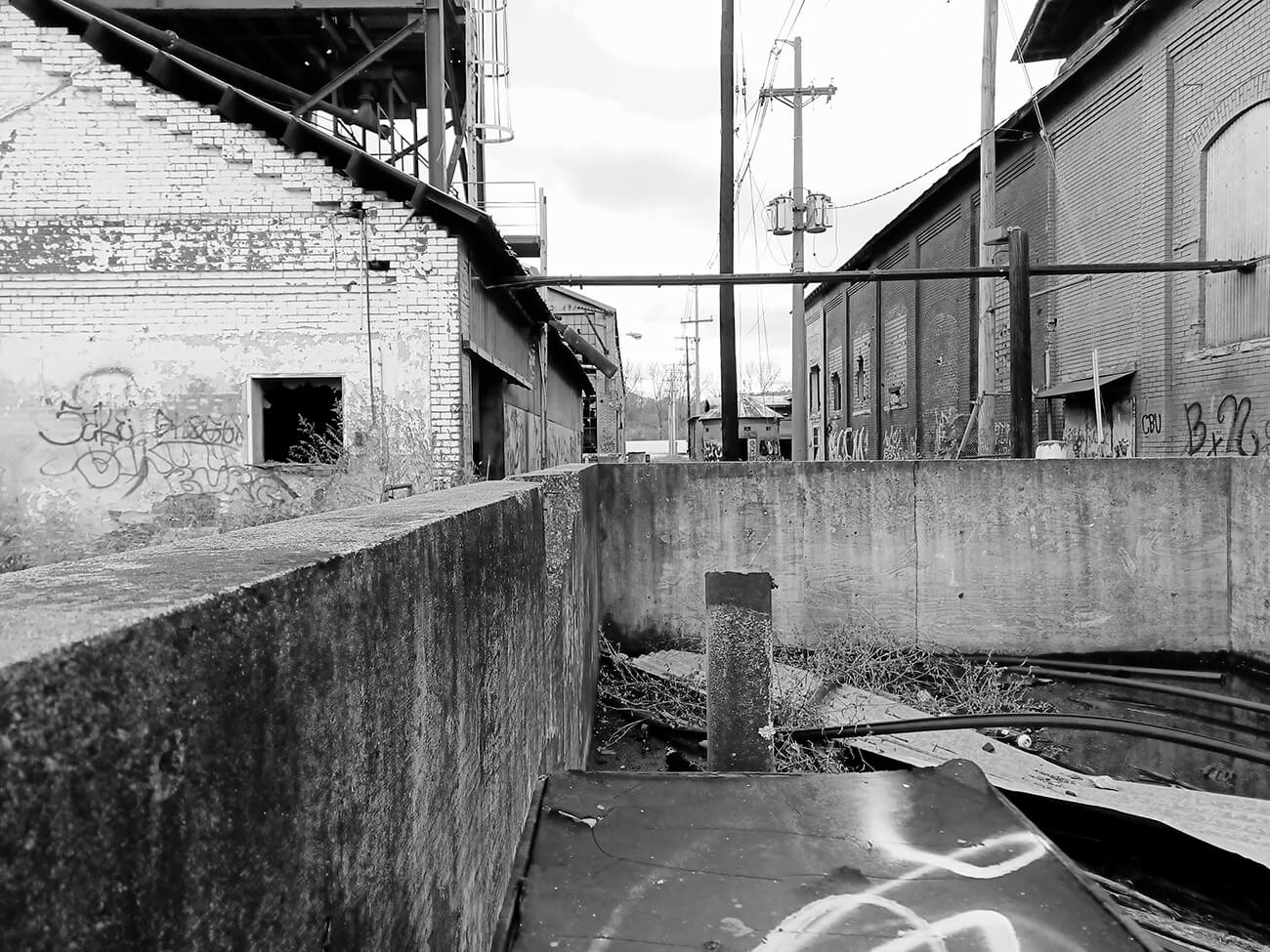The setting
On an early foggy morning in November 2022, we were southbound on I-24E. We had started in Decherd, Tennessee, on this smooth black
undulating asphalt ribbon with white and yellow lines - that was laid neatly down in a valley flanked on both sides by a potpourri of fall
canopies with occasional stubborn green ones, and by the watersheds of the vanished antebellum near the Cumberland and Tennessee rivers,
between soaring bluffs and hills. The moment we got on I-24E we were swallowed by the dense fog, and I, into the history of the battle
above the clouds (the battle of Lookout Mountain, Chattanooga) for about forty minutes of clarity within, and near zero visibility without.
We swung sharply west on the asphalt ribbon at sixty mph into the metastasizing urban warmth dissolving the fog, only to abruptly careen
into an industrial complex dressed in adolescent graffiti to our right. Was it the remains of the industrial or social revolution? We weren't
sure, but we were in Chattanooga.
''Wish Raju was here!'' exclaimed my son, his eyes glinting through slits created by his inflating cheeks in excitement. Chattanooga had
been repackaged, veiling its turbulent past coyly. Like any contemporary city, it's clean, sterilized and ready for the invasion of disillusioned
escapees from the east and west coasts tax guillotines. It sported a quaint historic downtown, with high-end shopping and gourmet
restaurants, a wide waterfront promenade on the Tennessee river, and scenic views all around. A postcard destination, no less. However, I
couldn't avoid the sepia visions within: once a dusty old railroad junction of the southwest, nevertheless, hallowed ground that a hundredsixty
years ago, was tread by larger than life figures of history: Generals Grant, Sherman and Thomas, who had reckoned on dislodging
General Braxton Bragg and his Confederate army from the hills around. This was seemingly an encore, after Grant's military paradigm: the
Vicksburg campaign. But, for my son, his campaign was to experience the mysterious remains at the edge of town.
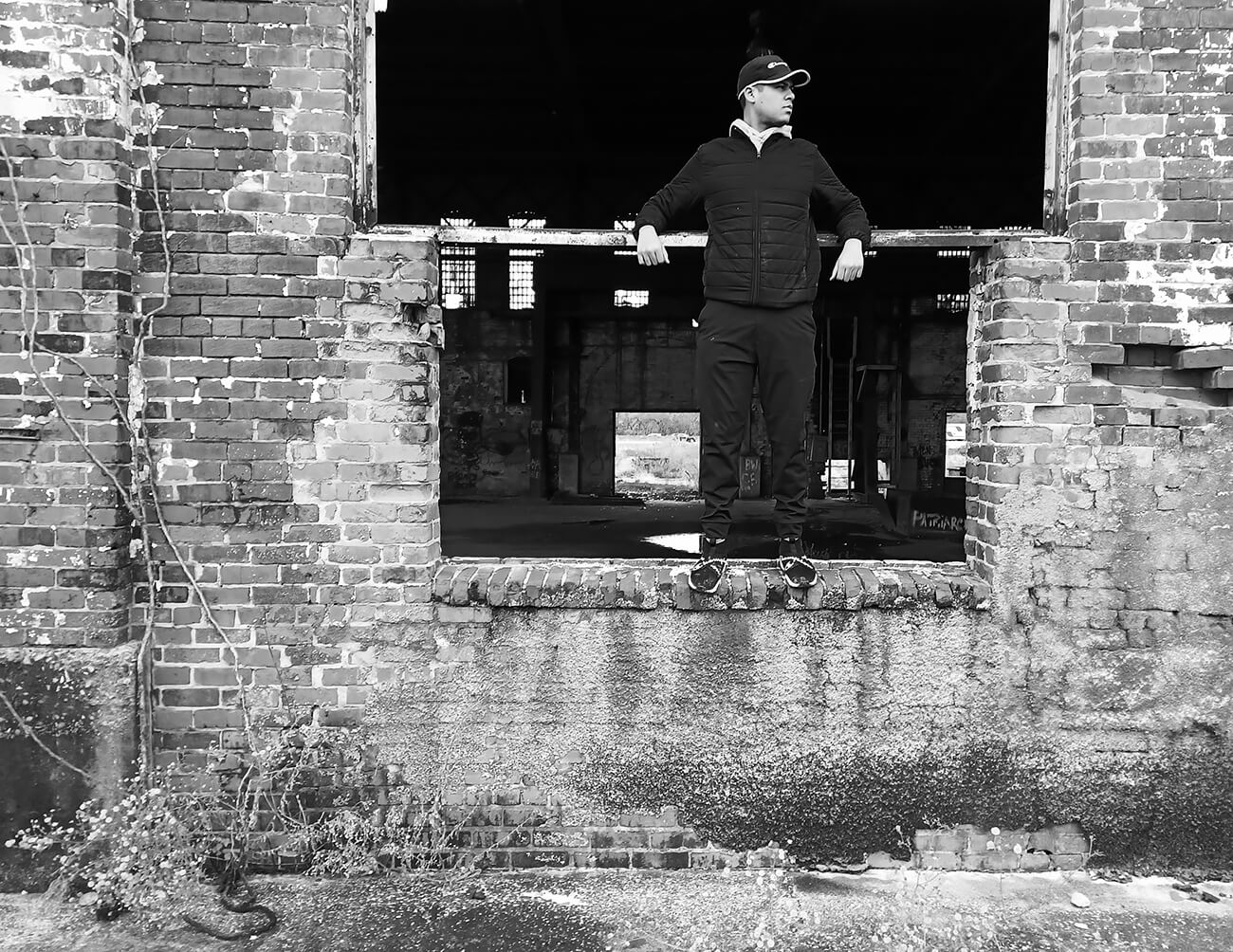
I contemplated about doing a Photo-essay, the experience of the place. Then I realized that a photo-essay was actually an old cliche: story
told through pictures - that sounded more like a storyboard: with a beginning, a middle and an end. Is that how life unfolds? I had arrived at
this conviction: the photo-essay has to be rethought - it's never a three act process that happens to formulate a play or film. To me a the photo-essay is actually photo-investigation, it's entirely investigatory. We look into our human condition, it's success or it's suffrage, our
conditions in all their iterations, past and present. Most importantly its subtext, what we sense or feel in that experience - what do the
photographs really yield besides the obvious? A theme, a message or a metaphor or a warning? If Robert Capa had to do a photo-essay on
WWII, where would he start? In Berlin or Washington? Should Mathew Brady have begun his exhibits with John Brown and lead up to
Gettysburg? Just a slice of the condition is what they showed, from which the viewer deduced the rest. Two photographs by Capa
encapsulate the entire struggle of WWII and Spanish war. It's never the quantity.
Shots have to be definitive or conclusive of a condition. They must evoke the entire narrative or scene. In his classic: ''Mimesis'' the critic
Eric Auerbach admonished creators against ''contrivances.'' The telling or showing must be mimetic of life, an inquiry, not a contrivance, a
plotted storyboard, prolix, overstated, therefore trite. It's always been investigative. By our investigatory nature, we metabolize experiences -
each one us has two experiences: A. a systematic - pattern experience at work with our colleagues on similar problems and issues related to
our specific avocations. Then B. our unsystematic - singular experiences at home based on a disparate set of issues, problems and solutions,
depending on our psyche and genetic makeup. These two disparate experiences are cross pollinated and thereby yielding a third set of
circumstances. This fetches us to our investigation, the subtext or the theme of such a place, especially, a place where hundreds interacted
through generations. Just think of the individual stories that had vanished.
The place was stunning, in its eerie vapidity, silence and darkness, yet the occasional sound, like plastic separation flaps being pushed aside
by an entering worker, wind rustling through blowing around all kinds debris was that of the folks milling around. Abrupt and jarring were
the doors swinging and slamming. What Poe would have loved: the place was devoid of birds chirping, which would have thwarted our
imaginary gore. This labyrinthine complex was both alive and dead - like our nails or hair. No trace of anything, but huge metal apparatuses
leading to various rooms, pipes on the ceilings, walls and doors, with valves. The shapes of metal fixtures reminded me of our organs, then it
was a metaphor: that factories, like us, are living breathing cellular organisms that thrive only when all the organs are healthy. We eat,
metabolize to create energy to function, produce life and waste - so does the factory.
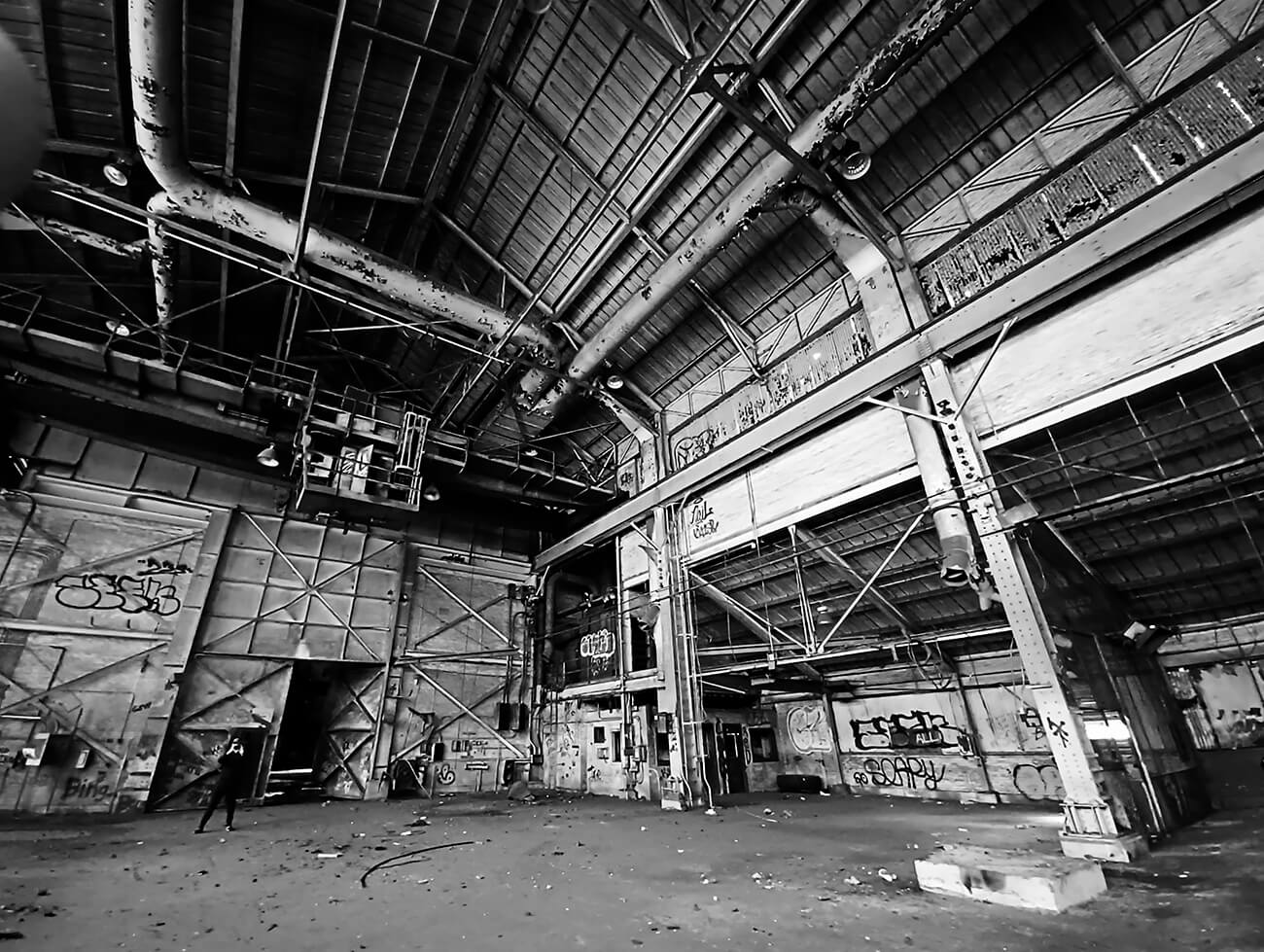
At this location, a rather large industrial complex, everything was completely picked, all of the equipment gone, it was undecipherable, and
only the shell and sheds remained, with a few fixtures. Then we saw it, a ladle on a ceiling crane, and figured that it was once a forge. From
all indications this vast complex had probably employed hundreds, making railroad equipment. However, there was no sequence to be had -
there was no specific entrance, yet this sense of completeness was felt in everything around, in it being inexplicable. The ambiguity of that
one main entrance opened up many entrances. The place wasn't dead, it was alive with a spirit of the unfulfilled, the incomplete and the
abandoned. If one walked around with their eyes up towards the surreal fixtures, they were sure to fall through the floor.
In several places, the floor had given in, and when we looked down into the abyss, there was no bottom, it was all India ink, yet we had
heard rapid incipient flapping, and a drop every few seconds hitting a body of liquid. The reservoir had water, or some form of liquid that
induced in us portents of Lovecraft-ish mayhem. Then there were gray-black rooms, where stairs led up to a maze of bio-metallic forms that
even H. R. Geiger would have found fascinating. At the threshold of one such staircase, one floor up, he stood looking up into the next floor.
Whatever he saw was sucking him in.
''Looks like a Xenomorph's hive - the queen laying eggs somewhere...'' I said looking around.
No answer. Silence.
''Atman - ATMAN! Goddammit, don't play games?!'' I shouted, only to hear myself reflected, distorted and amplified.
Total silence. Seconds into eternity.
''ATMAN!'' I am going to kick your ass!
He surfaces on the main floor a hundred-fifty feet to my right - with a villainous smile.
''The queen said hi to you! She's lonely...''
Lonely is a word that yields several facets in a place like this. This was being lonely within, and alone in a lonely place. It was a place where
it felt like something was going to happen any minute, and the dread of it kept us on the rusty knife edge every minute we spent inside. All
that remained was the gray concrete and the deep ruddy metal. Concrete is easy to knock down, but gargantuan metal structures oxidized and
fused together were not something easily dismantled or knocked down, unless with huge expenditure. I had wondered about the last
generation who had worked there. And, if any individuals still lived, they would take their story and the last days of complex to the grave.
Every human being is a story unto itself, that we cannot catalog in any way shape or form, unless all of them were writers or photographers.
This, I felt was a mausoleum to all their vanished lives. I experienced waves of chills within, perhaps the residual effect of all those
truncated lives.
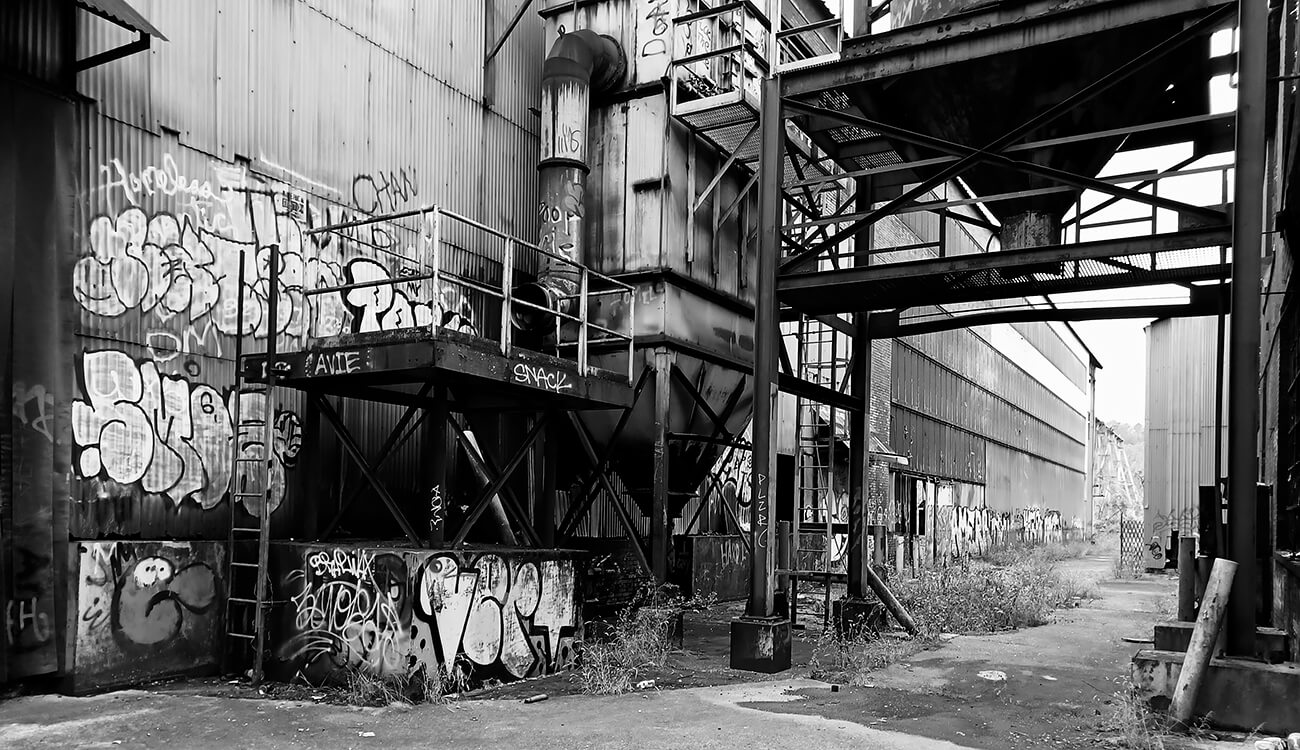
Melancholy is that protean factor that weights a photograph. A photograph is a triggering phenomenon of evocation, emotion and
melancholy, in that order. Many classes of people have been recorded by literary artists. Proust recorded, in indelible impressions, the early
to late Parisian bourgeois lifestyle. Steinbeck depicted the migrants of the great depression era. Dickens painted the whole of the Victorian
working class from the early Industrial revolution. Even accurate rendition of daily Roman life is available, both of the upper and of the
lower classes. What is not available is mid nineteenth to early twentieth century American life of the industrial class, both, north and of the
south. And here it was, for generations, in it's ugly segregated form.
These photographs, shot with a smart phone, are but of an empty facility, an empty stage if you will, where one could cast a good part of the
city of Chattanooga of the 1890s as players of a drama, but a drama that had to be aborted sometime in the past. We have no idea why. The
place was impressive, and the impressions I got were not about the details, it was the sum total of everything that hits all at once. This photoinvestigation
was not about any sequence of events, rooms or lives, but of abrupt experiences, consequently impressions, that impacted us in
every enclosure there, leaving us imbibed to imagine the rest. In photographic parlance, the camera captures what we fail to see, what we
gloss over, on the flip side, it fails to register what we sense and feel in the aftermath. The least consideration for such a discursive
exploration-investigation was the contemplation of the equipment we shot it with. Immediacy was the imperative.
Copyrighted: February
9, 2023 by Raju Peddada / All Rights Reserved on images and text.
